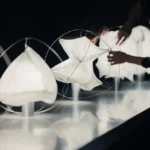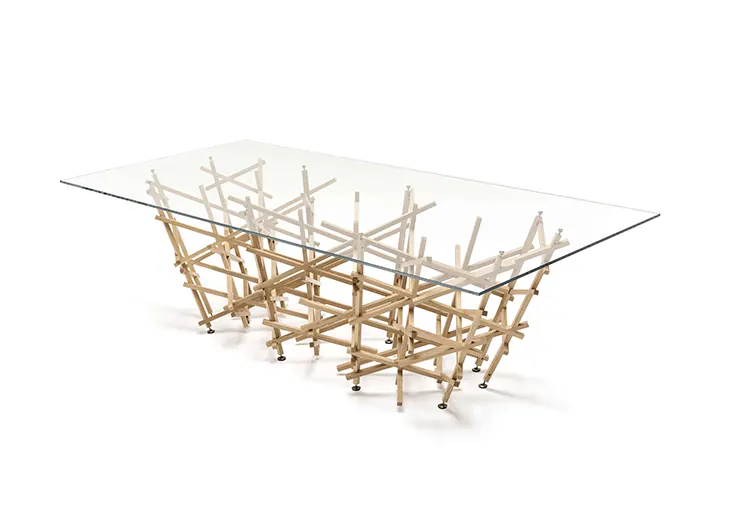
Eins Zu Eins teamed up with Japanese architect Kengo Kuma to design the Kigumi Table, a limited-edition piece that brings precision woodworking into dialogue with contemporary construction. The collaboration focuses on the tactile experience of materials, where solid white oak supports a floating surface of acrylic glass, punctuated by custom brass fittings. With only ten pieces available worldwide, each table includes a unique edition number and Kengo Kuma’s signature, alongside a certificate of authenticity.
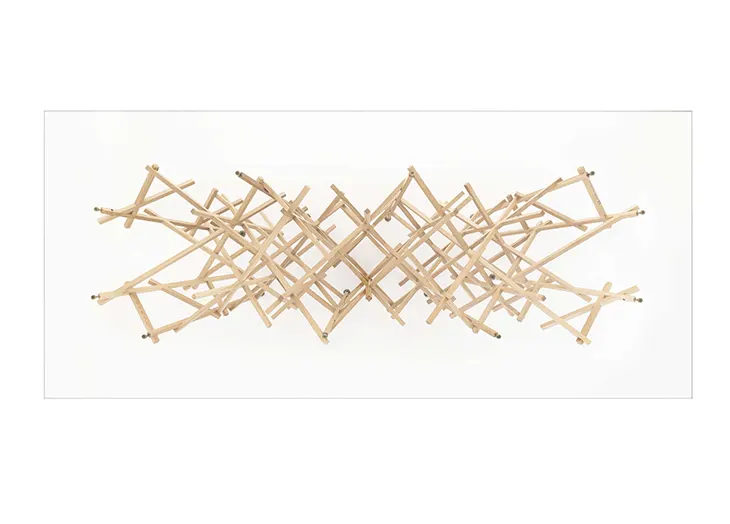
Lightweight in Appearance
The Kigumi Table carries a deceptively light visual presence. Its structure relies on 20mm by 20mm white oak slats arranged in a detailed lattice. This framework supports the transparent tabletop, allowing light to move freely through the construction. The transparent acrylic glass works in contrast with the warmth and precision of the wood below, while the brass connectors secure each joint and anchor the design in its physical reality.
This construction method references traditional Japanese joinery, where craftsmanship and structure carry equal importance. Rather than hide the mechanics of the table, Eins Zu Eins and Kuma choose to expose them. Every joint, every connection, remains visible and intentional.
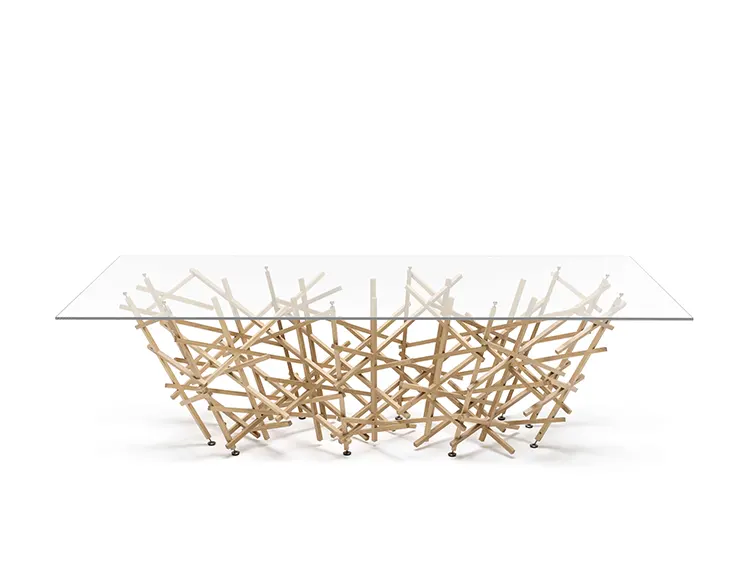
A Floating Surface with Structural Clarity
Described by the designers as a “wood cloud,” the Kigumi Table feels both weightless and exact. The see-through top plays a key role in this perception, allowing the viewer to observe the full structure from above. At every angle, the piece maintains visual consistency, with no single side taking precedence. Instead of using surface ornamentation, the table communicates through proportion, shadow, and the meeting points of material.
The brass fittings add rhythm and depth. They interrupt the repetition of the wood grid with points of tension and support, emphasizing the balance between material strength and visual lightness.
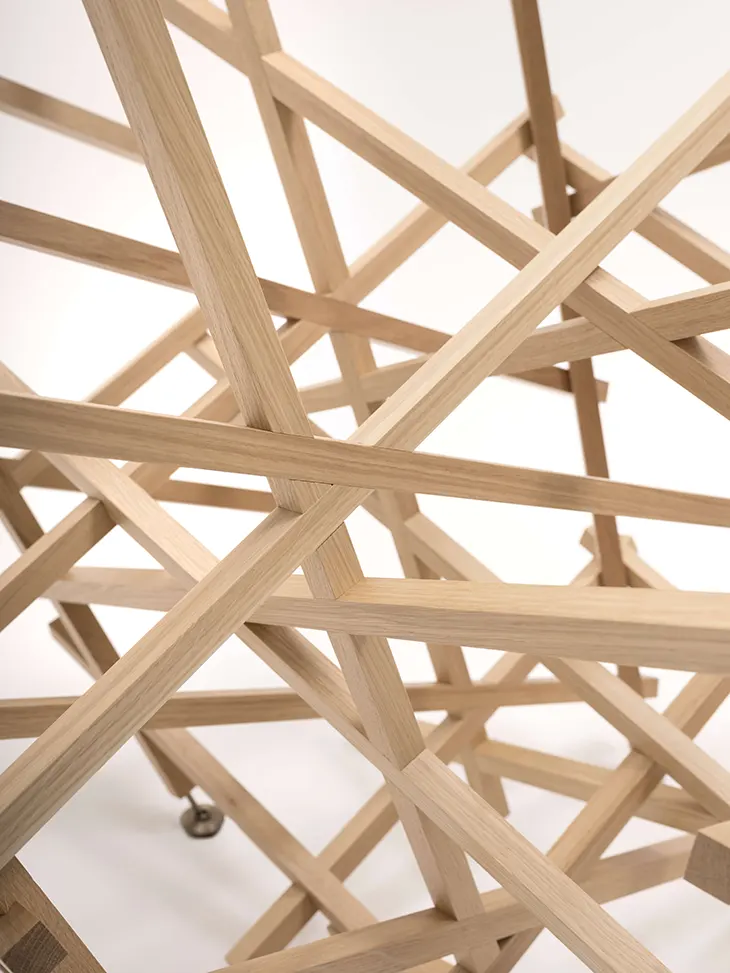
Limited Availability
Only ten units of the Kigumi Table exist. Each one features an engraved edition number and Kengo Kuma’s personal signature, details that reinforce the exclusivity of the release. A certificate signed by both Eins Zu Eins and Kuma accompanies each piece, giving the buyer direct connection to the makers and the process behind it.
This rarity aligns with the ethos of both collaborators. Eins Zu Eins often creates limited pieces that explore design through a conceptual lens. Partnering with Kuma, whose architectural work frequently plays with transparency and structure, extended that approach into new territory.
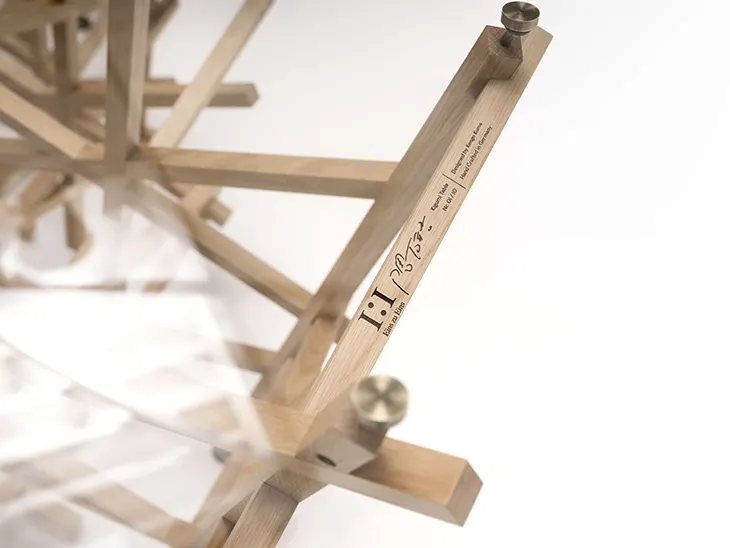
Shared Vision
The Kigumi Table doesn’t rely on decoration or complexity to make its point. Instead, it focuses on alignment, between tradition and innovation, between wood and glass, between weight and openness. Eins Zu Eins and Kengo Kuma draw from shared values: respect for material, interest in structural honesty, and a curiosity about how form responds to use.
The table serves more than its function. It becomes an architectural gesture in a domestic setting. Every element, wood, glass, brass, has a role, but none dominates. The result invites close observation and rewards attention to detail.

A Piece That Holds Space
With this release, Eins Zu Eins and Kengo Kuma bring architectural thinking into furniture design. The Kigumi Table doesn’t imitate anything else on the market. Instead, it carves its own direction through simple parts and precise execution. It invites the eye to slow down, to notice small shifts in texture and reflection, and to consider how structure can also carry emotion.
Each of the ten owners will take home more than a functional object. They will receive a composition of elements that speaks through construction, material, and restraint.



